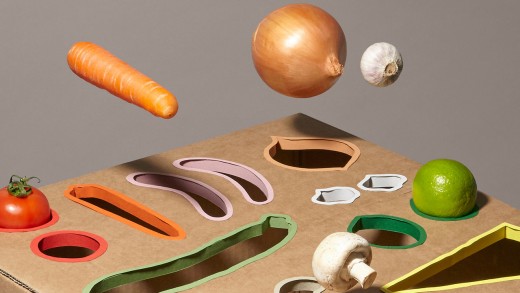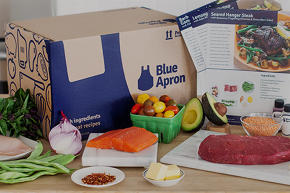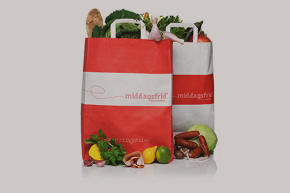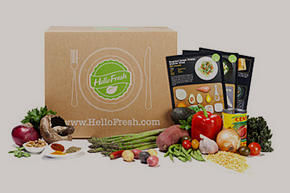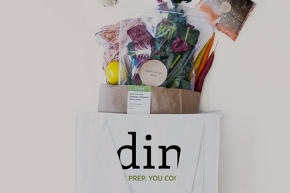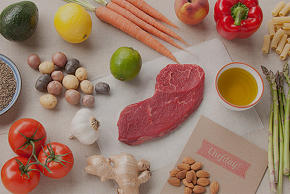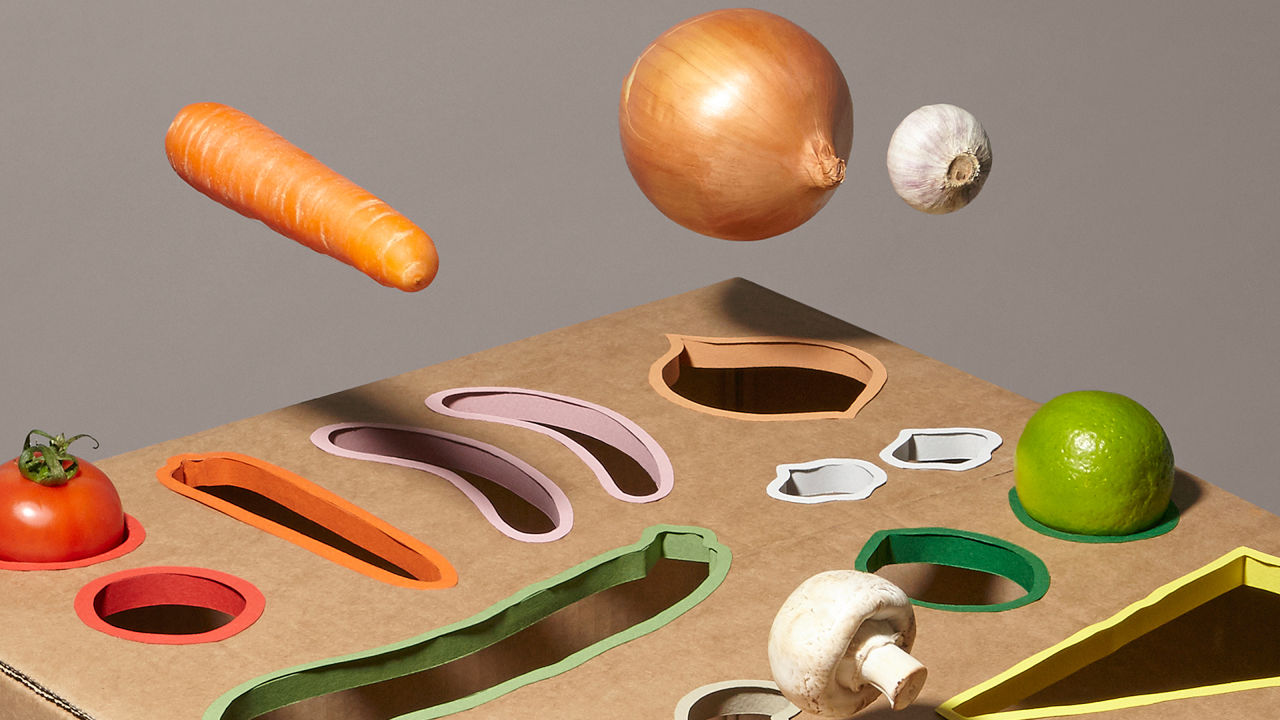The $5 Billion battle For The American Dinner Plate
traders in startups like Blue Apron, HelloFresh, and Plated are wagering a whole bunch of millions of greenbacks on the concept that dinnertime is just too laborious to control. As meal-equipment startups spring up like so many mushrooms, quick firm investigates the boxed-meal phenomenon and how it is going to trade the best way we consume.
June eight, 2015
My relationship with my kitchen is, neatly, sophisticated.
As a millennial, I came of age in the era of the farmer’s market, so i’ve a deep appreciation for a nice in the community sourced carrot or a relatively imperfect natural pear. I dutifully read Mark Bittman’s columns and Michael Pollan’s books, so i am smartly mindful that i will live a sad, sub-par, most definitely bloated existence if I refuse to consume at dwelling and select, as a substitute, to eat the processed junk peddled with the aid of the usa’s industrial meals complicated. I admit to from time to time binge-staring at MasterChef.
however this love of meals hasn’t translated right into a love of cooking. My mother is an out of this world prepare dinner, however she labored full time and within the rush to get dinner on the desk via 7, she often relied on semi-ready meals, like pre-marinated meats or curry mixes. From the place I sat, cooking gave the impression of a drag, something that took time and effort in the middle of an already overcrowded agenda. to quote Krishnendu Ray, the chair of the meals studies software at ny university: “Caregiving comes at a cost. on every occasion there is a labor of love, there is also a labor of resentment.”
when I moved into my first apartment years later, my stovetop gave the impression overseas and intimidating. At one level all over graduate school, in a in particular tiny Bay space condominium, I used my oven as a filing cupboard.
Now, at age 32, after three years of marriage, my husband and that i in finding ourselves trying to sit down down to a pleasant home-cooked dinner at the finish of the day. but we’re too busy and too inexperienced in the kitchen to make that happen. We consume out quite a bit, ceaselessly hitting up Chipotle or our local Vietnamese place on the way residence from work, habits moderately standard of our demographic. Millennials spend more on food out of doors the home than some other technology, averaging $50.75 per week. As the 2 of us believe beginning a household, we concern about how our culinary ineptitude will impact our future kids. we are beginning to wonder if we even have what it takes to place a correct, nutritious dinner on the desk for our childrens.

Enter the meal package, our partial method to getting ourselves fed healthily. each Sunday, we obtain a field full of in my opinion wrapped and labeled substances for 5 dinners full with particular—and, fortuitously for me, fool-proof—recipes. simply Add Cooking, the carrier we use, completely serves the Boston space and uses largely native produce; it saves us time planning meals and purchasing for groceries, an particularly gruesome job all through winters in Cambridge, Massachusetts. while we do not have much option over the foods we obtain, our box is slowly helping us to acclimate to our kitchen (for functions instead of report storage, that is). despite the fact that my mother laments that we’re paying a long way extra for each meal than she ever spent on groceries for our domestic, we’ve calculated that we spend moderately less than we would if we had been consuming out for these foods.
and i’m rarely alone. Technomic, a meals-trade consulting agency, predicts that the meal-equipment carrier section of the market will grow to between $3 billion-$5 billion over the subsequent 10 years based on present adoption rates. folks like me are the reason venture capitalists are fire-hosing cash on the area in a fairly magnificent type: when you consider that boxed-meal startups Blue Apron and Plated launched in 2012, they have raised $58 million and $21.6 million, respectively; the Wall street Journal recently pronounced that Blue Apron is in talks to lift an enormous new spherical from buyers that would price the company at $2 billion. And HelloFresh, a eu meal-package company based in 2011 and backed by means of notoriously aggressive startup copycat Rocket web, simply closed $126 million in collection E funding with the goal of making incursions within the U.S. market. Blue Apron can provide greater than two million foods a month, and HelloFresh claims it is already doing twice that quantity.
U.S. shoppers have a plethora of alternative meal kits to choose between, every with a relatively completely different gimmick: ChefDay offers step-by way of-step videos so you can cook dinner together with chefs (though the company just lately introduced it could temporarily suspend deliveries for a “an important section of transition”); Din cuts up one of the vital ingredients for you; Peach Dish brings you Southern-impressed cuisine, and smaller, regional companies are doping up across the u . s . a . like so many shiitake mushrooms.
With all these corporations duking it out for the boxed-meal consumer, the query remains: just what number of are there of us to go round, anyway?
given that restaurants and grocery outlets promote $1.2 trillion of meals annually, even in probably the most confident situation meal kits presently represent one quarter of 1 percent of food sales—and a few assume they’ll stay an extremely specialised solution for a sliver of the inhabitants. “i’ve a hard time believing that this is the way in which we will eat on daily basis,” says Darren Seifer, meals and beverage analyst at the shopper research firm NPD team. “this is a very niche possibility that’s barely even exhibiting up in the knowledge.”
Brian Todd, president of the food intelligence nonprofit The meals Institute, says that even supposing the boxed-meal trade does hit the $5 billion mark, it is still, relatively, peanuts. “It’s necessary to maintain the numbers in viewpoint,” he says. “even though meal kits grow to that stage—which strikes me as extraordinarily rapid increase in a single category—it’s one of these small portion of the overall food industry.”
Some food scholars are skeptical as smartly. “i’m betting that a lot of this hype is investor-led,” says Nina Ichikawa, the coverage director on the Berkeley meals Institute. “common everyday meals is just not as successful as luxury take-out. investors are excited that there’s now the next-margin item on the horizon. however that does not mean there can be an avalanche of shoppers. I indubitably can not have the funds for these things.”
but buyers are making a bet large that the naysayers are wrong. they’re wagering a whole lot of tens of millions of dollars that these companies can triumph, in part, by way of taking part in on americans’ nostalgic ideas about house and fireplace—although it means better worth tags, packaging waste, and convincing a technology to beat any qualms it will have about this new way of putting dinner together.
The meal kit is a fairly latest innovation. It was born in Stockholm, Sweden, when Kicki Theander, a mother of three, observed that many families wished to eat home-cooked dinners however struggled to regulate the logistics of meal planning, buying, and cooking. In 2007, she launched Middagsfrid (roughly translated: “time for supper bliss”), a carrier that brought baggage of groceries to individuals’s doors. It used to be an fast hit. Theander’s model quickly spread to Denmark, Germany, Belgium, and Switzerland, and spawned a range of competing companies. as a minimum 10 completely different meal-equipment companies now function in Sweden by myself, and the us of a’s inhabitants is beneath 10 million people.
in the U.S., boxed-meal services had been at the start adopted with the aid of millennial urbanites. “These are individuals with extra expendable income who are searching for convenience and in all probability do not know find out how to cook on their own,” Todd says. Plated, Blue Apron, and HelloFresh are all headquartered in ny and even supposing they are available nationwide, they have a tendency to do particularly well in cities like new york and San Francisco the place grocery buying can be a problem because many people don’t have vehicles. “Our buyers are essentially residing in and around main metro areas,” Nick Taranto, Plated’s co-CEO and cofounder tells fast firm. “they are generally faculty-educated, twin-profits families without a youngsters.”
Nicole Marshall, a advertising professional in her early thirties, first began the use of Blue Apron when she was living in NY city, however found it much less interesting when she moved to Denver. “the theory of cooking at dwelling in new york is a ache because you’re hauling groceries everywhere city,” she says. “but in Denver, I go through three grocery stores on the force dwelling from work, and there’s a thriving farmer’s market scene on the weekends. None of my colleagues here had ever heard of those packing containers.”
large-city dwellers are additionally used to spending some huge cash on meals, in view that the cost of living tends to be high where they are living. this is any other cause they might be more amenable to boxed foods, which might be an expensive proposition. Taranto says that his target demographic is what he describes because the “advanced eater,” which is, according to Plated’s proprietary research, a 31 million robust segment of the American population that cares deeply about the high quality of their food and has enough disposable earnings to put money into consuming well. Taranto says that whereas $12 a meal is a pricey dinnertime time option for a lot of, it is a affordable cost to a phase of consumers whose alternative choices embody consuming out, either at fast informal chains like Panera Bread or at superb eating institutions, or shopping for groceries from upmarket grocery stores like complete meals. “We’ve been very deliberate about going after the excessive finish first,” he says. “As our logistical network expands we can deliver at lower price factors to more and more individuals.”
of course, the urban, dual-profits, no-children demographic is a limited and fleeting one—when my husband and i’ve youngsters and a personal loan, for instance, will our weekly box still appear like a rewarding fee? Will boeuf bourguignon and seafood paella go down smartly with the little one set?

that is one thing the boxed-meal corporations are fascinated by, too. In December 2014, Blue Apron announced it was offering a household Plan that will feature child-friendly dishes designed to serve 4 folks at a price of $8.74 a person, or $34.ninety six per meal. In its press unencumber, it announced that this new product would allow it to start “doubling its addressable market.” given that the typical American household spends $151 on groceries for the whole week, or $21 for an entire day, Blue Apron’s software is over many families’ budgets. still, Matt Salzberg, Blue Apron’s founder and CEO, says that the household plan has fast turn out to be a large proportion of the corporate’s total business, although he declined to supply hard numbers. He additionally insists that the field bargains clients excellent price. “It’s very affordable,” he tells me. “try to buy groceries for our recipes at entire meals or at some other grocery store. in addition to no longer being able to to find most of the substances, it would cost you 60% extra.” (This may well be proper, but the merchandise at a grocery store would virtually no doubt are available larger sizes and might be used for more than one meals, and possible save for recipes requiring more effective and extra inexpensive substances.)
For some upper-middle-class families who’re already buying at premium grocery stores like entire foods or eating out so much, though, meal bins are a attainable choice. Take Stella Loven, a working mom in Cambridge, Massachusetts. Her job because the president of the Swedish American Chamber of Commerce in New England keeps her days full, but when she comes house, she desires to create nutritious ingredients for her 4-year-previous daughter and six-yr-old son. “The pressure is on: you want to be a just right mother, you wish to have to lose the infant weight, you want to be a good wife, all whereas being tremendous fun. It’s just very exhausting,” she tells me. “occasionally I want I hadn’t learn all those books about what processed meals does in your body: It simply provides more anxiousness once I come house and need to cook dinner for my children.”
Loven’s stresses are relatively conventional: consistent with the newest knowledge from the Bureau of Labor statistics, working women spend greater than twice so long as working men cooking foods and cleaning up afterwards. Loven’s weekly meal field cuts down on time spent meal planning and grocery procuring, despite the fact that there is still the prep time of 30 minutes, supply or take quarter-hour, a meal. She tried Blue Apron for a while and eventually settled on just Add Cooking. a week, she spends $139 for 5 four-person dinners, which translates to $6.ninety five per particular person per meal, or $27.eighty for each and every dinner. Jan Leife, simply Add Cooking’s co-founder and managing companion, says that domestic bins represent 60% of the corporate’s gross sales.
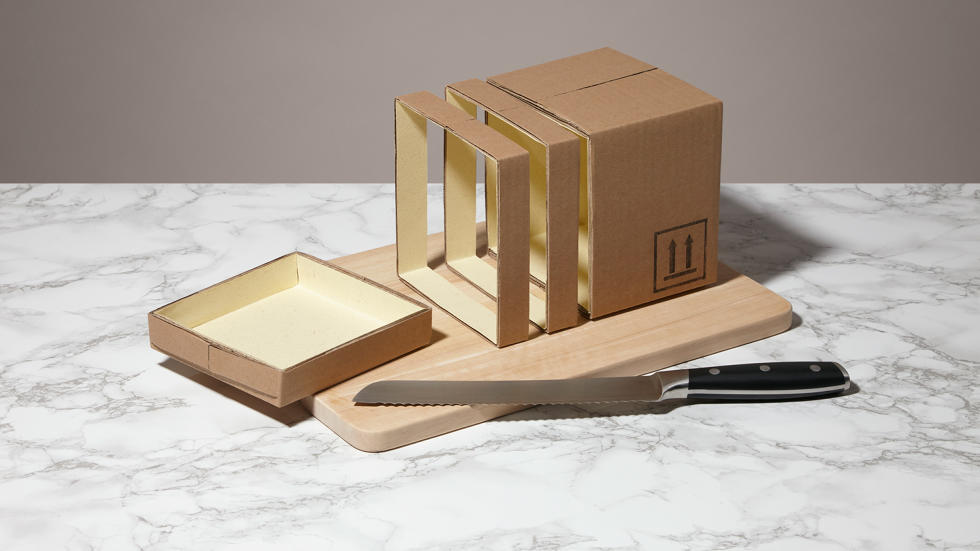
As boxed-meal corporations grapple each and every other for keep watch over of the American dinner plate, it’s worth asking simply how, precisely, they could also be changing our relationship with meals. in spite of everything, food is not only about nutrition: it’s also about tradition, group, domestic traditions. My conversations with the founders of meal-kit firms exhibit these corporations usually are not just excited about the practical desires of their clients, but also the emotion tied to getting ready food and gathering around the desk to consume it. whereas americans may just really feel nostalgic for the romance of the domestic dinner depicted in Norman Rockwell paintings, many don’t really feel geared up to prepare dinner as a result of lack of time or talent.
“part of why that is such a giant idea is because we’re connecting our aspiration to cook and share food to the truth of a busy up to date life,” says Taranto of Plated. “we’ve this primal want to eat food collectively. however a lot of people in our parents’ technology didn’t discover ways to prepare dinner, so many people did not have the ability to analyze from them. In many ways, the family dinner stopped with our grandparents.”
Taranto is pointing to a shift that has been gradually taking place over the last 50 years, as more ladies began working out of doors the house and corporations started out churning out television dinners, quick meals, and straightforward takeout options—we’re looking at you, Seamless—decreasing the labor required to place food on the table. Blue Apron, for its section, says it is explicitly committed to the idea of culinary education. “chefs around the globe wear blue aprons when they’re studying to cook dinner and for us, it’s an emblem of lifelong studying in cooking,” says founder Salzberg.
in fact, this depends to an extent on how you outline “cooking.” Is picking or thinking about the dishes you want to make for your family, after which choosing the proper cut of meat or one of the best seasonal vegetables a vital part of the process? Or is the act of combining substances that anyone else has chosen, measured, possibly chopped, and packaged, to create recipes they have got curated for you, enough? it is a delicate distinction, but one that all of sudden became clear to me once I began cooking dinners straight out of a box.
closing month, I was once preparing the next meal in our equipment, a vegetarian dish of shredded carrot patties with a aspect of mashed potato, celery, and leek. After 40 minutes of peeling vegetables and pureeing them in our barely-used industrial-sized Kitchenaid mixer (a wedding current from Aunt Jewell), I used to be pleased with my accomplishment. I plated the food with all of the earnestness of a MasterChef contestant, artfully sprinkling sesame seeds right here and sprigs of contemporary tarragon there. The meals tasted great. My husband used to be impressed, but existential questions nagged me as I considered the plate: “Did I in reality prepare dinner this? Or did I just gather it? Would I be capable to replicate that meal without the lend a hand of the meal package? can you credibly declare to be a good cook dinner should you can not find substances in a grocery store or know tips on how to combine them on your own?” I was once no longer in particular good firm that evening.
this isn’t the primary time that corporations have toyed with the meaning of cooking. within the Nineteen Fifties, cake-mix companies, following a droop in gross sales, believed that American girls didn’t really feel like they have been cooking if they merely delivered water to the cake powder. marketers were definite that changing the combo system to require customers so as to add an egg gave them a way of possession over the cake they had made. while the boxed meal requires more involvement than Betty Crocker did with her satan’s food, these firms are still chopping out elements of the cooking course of that many would argue are crucial to idea of actually finding out to cook dinner.

what is misplaced when families should not inquisitive about choosing the dishes they cook? For one thing, it implies that they aren’t sharing meals drawn from their own retailer of recipes, their heritage, and even regional specialties. I was once born to an Indian father and a chinese language mom, but spent my childhood around the world on account of my father’s job in the airline industry. the only time I truly felt linked to my culture used to be at dinner each night time, eating rice with rooster curry, fried noodles, greens in soy sauce, or coconut chutney with dosa (a kind of Indian crepe). My husband, for his section, felt a hyperlink to his Jewish heritage when he was once eating his grandmother’s matzo ball soup, brisket, or Saturday-morning bagels and lox. If the 2 of us don’t transfer past the meal kits, there’s a assorted possibility that a lot of our family’s food traditions will finish with us and as an alternative shall be determined via a well-which means government chef in an industrial kitchen.
Krishnendu Ray, of NYU’s food research program, points out that this transmission of meals culture has been shifting slowly during the last century. “knowledge about food used to be as soon as conveyed in close proximity from mother to daughter or grandmother to grandchild,” he says. “Now now we have to study this from an organization or the mass media. however we shouldn’t over-sentimentalize the prior: American women had been learning about food from companies for the reason that industrial revolution. for two generations, women were finding out recipes from the back of meals packaging—think about the popularity of Jell-O molds or chocolate pound cake.” So I’m mourning a loss of tradition and custom that has already begun eroding.
The meal-kit industry is most effective just beginning to consider the cultural or regional resonance of food. the big nationwide brands like Plated, Blue Apron, and HelloFresh supply menus with a worldwide bent, offering customers an academic expertise in which they are able to discover new cuisines, unfamiliar spices, and new cooking ways. however, a range of smaller brands have lately entered the scene providing a regionally specific cooking expertise. Peach Dish, which ships nationally, offers “Southern-infused” recipes. And Boston-primarily based just Add Cooking’s complete goal is to keep issues local, moderately than expanding nationally, which its founders consider may also lend a hand to preserve regional delicacies. “there’s a yes connection between native components and native recipes,” says Jan Leife of simply Add Cooking. “It’s something we attempt to leverage in our meal containers.”
Leife can be wedded to the local variation as a result of he believes it’s extra environmentally sound; shipping nationally requires food to be kept chilled and packaged to steer clear of damage. When simply Add Cooking expands to a brand new area, Leife will arrange a brand new hub with the intention to keep sourcing and menu planning native. “the enormous corporations are very good, after all, by means of grabbing land and increasing,” Leife says. “but in the long run, our version is indisputably more sustainable and environmentally friendly. We’ve discovered that there is a market for our product among people who care about the waste involved.”
and that’s another hurdle all boxed-meal companies must believe: waste, and consumer perception of it, an advanced however nevertheless crucial difficulty for meal kits as they are attempting to take market share from grocery shops. because the vast majority of meal-equipment firms aren’t local, they face the complex provide chain logistics of transporting meals from farms and manufacturing crops to locations across the u . s . a ., while maintaining the whole thing at the proper temperature. this can be a vastly vitality intensive course of. Meal kits use huge quantities of packaging to include small quantities of spices or cheese or balsamic vinegar.
that is one thing that Plated’s Taranto constantly wrestles with; his intention is to make the corporate a hundred% carbon neutral. As a step in that path, Plated started transport ingredients out using packaging made of jute, a recycled and renewable plant based fiber, beginning June 1. but Taranto admits that being environmentally sustainable is an ongoing combat. “The problem is that customers need excellent-taking a look elements and not using a packaging,” he says. “that is, unfortunately, now not life like.”
Marshall, the Denver-based totally advertising skilled, tells me that she indirectly deserted the boxed meal-equipment idea solely on account of the sheer amount of waste she was collecting. “i didn’t sleep smartly at night time with the quantity of rubbish that used to be going out of my door every week once I was once the use of Blue Apron,” she says. “It was the ice packs that in reality put me over the threshold: there are massive amounts of them in the field, as a result of it’s delivered throughout the workday and chances are you’ll not get to it for 8 to 10 hours, and there are not any instructions about the right way to recycle them.”
She admits that it’s arduous to make an instantaneous comparability with grocery procuring, which entails waste of other forms. for example, grocery retailers waste huge quantities of perishable produce as a result of they’re unable to exactly predict demand. The USDA estimates that 31% of meals in grocery outlets goes uneaten every year, resulting in a loss of $161.6 billion; France simply made it unlawful for supermarkets to throw away safe to eat food so that you can scale back waste on this epic scale. Meal kits, then again, comprehend exactly how many containers they wish to fill and are in a position to order precisely the amount of food they need. Taranto says that with predictive analytic technology, his firm is able to maintain food waste to under 2%. At residence, consumers are also now not losing meals, for the reason that they have got exactly what they want for each recipe, right down to the collection of sprigs of mint or parsley, and every meal is exactly one serving—no more tossing the leftover thriller meat weeks after you firstly stash it in Tupperware.
And in some way, as Nina Ichikawa, Berkeley meals Institute’s coverage director, points out, this simplest accounts for a tiny sliver in total meals waste; it doesn’t account for the meals wasted through farmers who are unable to predict demand or the meals that is damaged as it’s transported. “through simplest collaborating in an extraordinarily slender slice of the meals chain, that you would be able to possibly say that you’re averting waste,” she says. “but by using dipping inside and out of it in accordance with make a choice client calls for, that doesn’t cut back general waste in the machine.”

Marshall believes that boxed-meal services want to consider carefully about how one can turn into more sustainable because earth-aware millennials are paying close attention to the waste they’re producing. She argues there are other that you can imagine fashions these corporations could adopt, equivalent to giving consumers a starter kit with the main spices they’re going to use so they don’t want to ship little packets every week or selecting up the earlier week’s field to reuse the containers. “We reside in an age the place we take our personal luggage to the grocery store,” she says. “These boxes don’t coincide with that mentality at all.” The rippling environmental impression of meal kits goes to take on growing significance if these services do have the ability to achieve a much broader audience.
despite these challenges, campaigns by means of smartly-funded boxed-meal companies to change the way we eat could have ripple results—and not simply on wealthy, urban, childless subscribers. as an example, they may push grocery retailers to renew their emphasis on the usage of know-how to reinforce comfort and shopper expertise. The Boston Consulting crew predicts that global online grocery buying is anticipated to be a $one hundred billion business with the aid of 2018. “That’s no longer just the Amazons of the sector,” Todd of The food Institute explains. “That’s exact grocery retailers increase on-line ordering and delivery methods.” With the popularity of meal kits, he predicts that grocery outlets could start grouping products into meals, in an effort to pick up a package of ingredients to make rooster parmesan or no matter you’re in the temper for. that is, actually, already taking place in Sweden, the place grocery retailers provide meal kits and deliveries designed to compete directly with Middagsfrid. “We’re simply on the daybreak of this trade,” says Taranto.
In some other twist of the concept that, three graduate college students at the university of California at Berkeley’s college of public health are eager about a option to observe the principles of meal kits to help terrible communities. Single working oldsters, of all individuals, may profit from time saved on meal planning and buying. They’ve launched a low-cost meal-package carrier, Cooking Simplified, that requires households to spend just one% of their week—about an hour and a half of—to make three completely different dishes which can be large enough for about half of a week’s ingredients (or, 10 servings), for $32. each box incorporates only three recipes which might be designed to result in leftovers that can be taken to work tomorrow. while the startup remains to be in its infancy, it bargains a glimpse into the possibilities of growing cheaper options targeting a much wider range of shoppers.
Todd additionally suggests that folks would possibly cease using the boxed-meal kits once they’ve developed the talents they need to cook dinner on their own terms. “people who didn’t research to prepare dinner growing up, but had been the use of these meal kits for several months or years may commence to feel comfortable planning ingredients or buying elements,” Todd says. If companies train people to cook, they are going to find themselves dropping these very consumers. “Going to the grocery might become more attention-grabbing and they might take a look at the spice aisle in a new light. it would occur to them that it may well be higher worth to purchase a jar of bay leaves than to get one every week in their box,” graduating from the boxes to a more traditional, old-fashioned strategy to meal planning, grocery purchasing, and cooking.
After a couple of months of the usage of our meal equipment, our interest in it has started to wane. The meals are still tasty, however the novelty is sporting off and we occasionally have cravings for meals that aren’t in our box. We once in a while skip weeks and mud off our cookbooks, choosing recipes that strike our fancy then navigating our grocery store to hunt for cardamom or dill. I’m beginning to assume we might be getting as regards to cooking like grown-ups, with out training wheels.
however in all probability I’m being positive. the opposite day i tried to make leek soup, but by accident used the wrong part of the vegetable, the harsh, darkish leaves. As my husband bravely tried to swallow the slimy inexperienced liquid I produced on the dinner table, i discovered myself thinking: “this might never have took place with our field package.”
[Paper sculptures: Kyle Bean; images: Aaron Tilley; Mushroom and Tomato photos: Celine Grouard for immediate company ]
fast company , read Full Story
(200)

